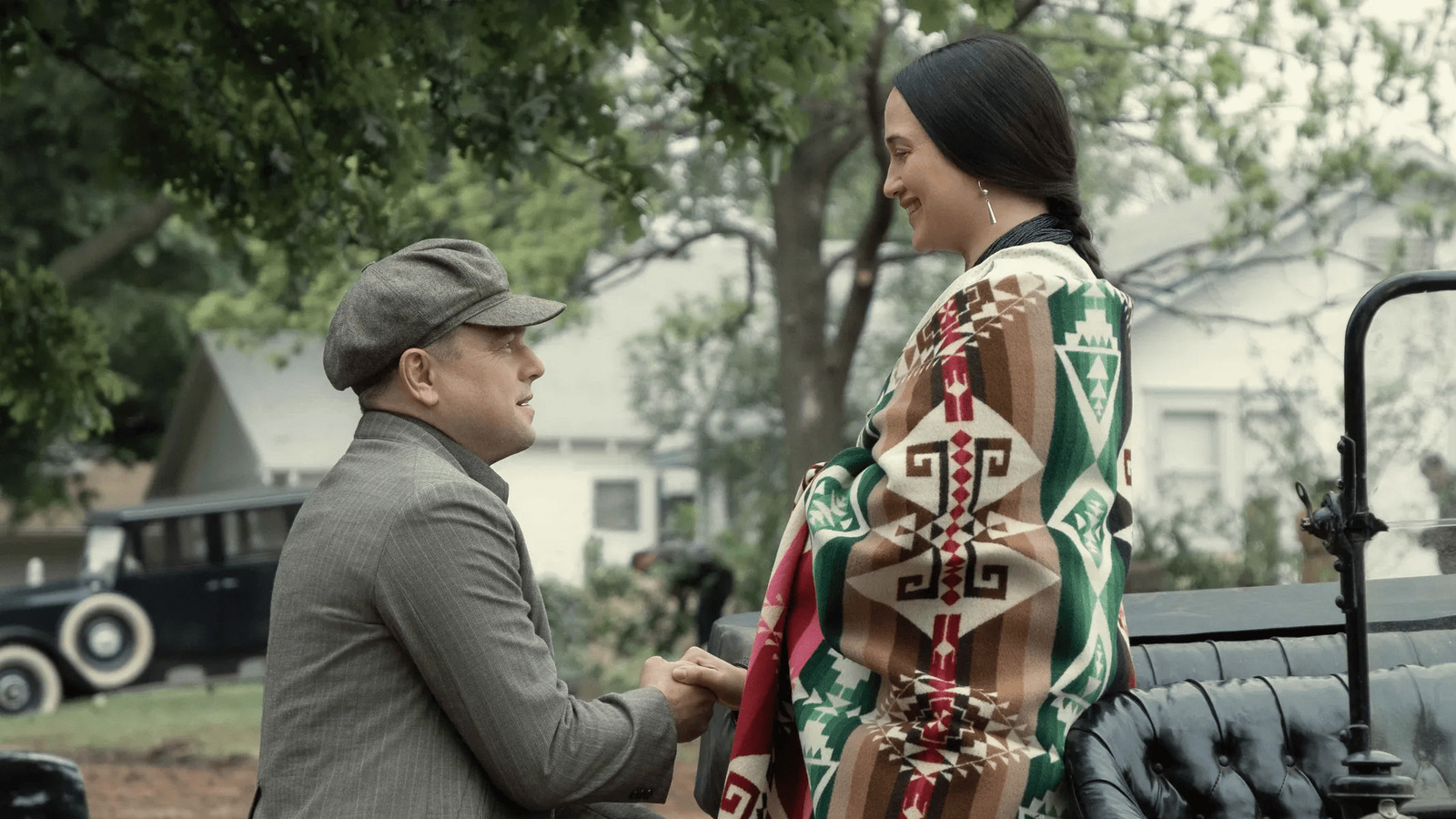
In its own way, “Killers of the Flower Moon” is once again tackling a common refrain utilized in reasonable defense of Scorsese’s films: depiction does not equal endorsement. There have been plenty of online arguments about the misdeeds performed by the main characters in films like “The Wolf of Wall Street,” “Goodfellas,” and “Taxi Driver.” To show these people and their crimes is not to automatically revel in those people and their actions. Sitting through the 206-minute “Killers of the Flower Moon” — a necessarily epic length — should be enough to realize that the actions performed by Ernest, King, and their various criminal comrades are intentionally designed to showcase them as truly awful people. In many cases, too, these men are as arrogant as they are dumb. The general idea of King’s plan is terrifyingly simple enough: one by one, take out members of the Osage tribe, ensuring that one of King’s men is standing by as a member of the family via marriage, to make it so ownership of the oil-rich land goes to them. Though King is arguably the smartest member of his gang, all of whom present a friendly enough face in public, even his arrogance eventually gets the best of him.
The grimmest part of “Killers of the Flower Moon” is the key word in that last sentence: “eventually.” King and his men aren’t remotely as careful as they ought to be in their various murders, whether it’s Ernest emphatically instructing a hired killer to shoot his quarry in the front of the head only for the killer to shoot the back of the head or a house explosion being so devastating as to take out half a residential block. But just as the U.S. government wrought plenty of cruelty upon Native Americans, they’re incredibly slow to act. Within the last hour or so of “Killers of the Flower Moon,” the proverbial cavalry arrives in the form of Bureau of Investigation agents led by Tom White (Jesse Plemons). (Grann’s book focuses as much on how this sprawling series of crimes spurred on the creation of the FBI, but King and Ernest are understandably befuddled by hearing about a “Bureau of Investigation.”) But by then, it seems far, far too late to stop the madness.
Of course, members of the Osage understand almost to the core of their beings what the presence of white men like King means, even if they’re not attempting to loot, pillage, and murder. The opening scene of “Killers of the Flower Moon” is rent with emotion, as we see a group of Osage elders acknowledge that with white men in their town now, their children will be indoctrinated (in a fashion) into white, Western culture; as true as this is, it’s both shocking and understandable that the reaction among the other Osage members is an intense outcry of sorrow and heartbreak. That sorrow and heartbreak carries through the film, primarily in the person of Mollie, brought to life with incredible passion by the remarkable Lily Gladstone. Gladstone, previously best known for appearing in Kelly Reichardt films like “Certain Women,” is a lightning rod of a performer, with Mollie’s intelligence communicated through silence as much as through anything else. In her initial scenes, as she carries herself with an enigmatic air akin to the Mona Lisa, Gladstone almost acts DiCaprio off the screen, matching his charisma with a vivacity of her own.
It also means that as Mollie and Ernest’s relationship slowly curdles, the film gets darker and darker as she grows weary and ill. Like other members of the Osage tribe, she’s more prone to ill health, here in the form of diabetes. But as King continues pushing Ernest, the hapless latter man is encouraged to add something “to slow her down” to her daily insulin regimen, eventually leaving Mollie bed-ridden, barely able to move, and prone to hallucinations.
